The sun had set on Rome by the time our bus pulled to a stop in front of the hotel. Orange tungsten bulbs and the occasional white flash of passing headlights lit the street, reflecting off pavestones slick from recent rain and casting a dim monochrome haze over the shadowed 19th century facades. There seemed to be little for tourists on these quiet streets which, in combination with the youth of the buildings, led me to assume we were on the outskirts of Rome, far from the antiquities at its core.
I slept easily that night and, when I awoke the next morning, crept around my still dormant roommates and out into the hall. I followed the signs directing patrons to breakfast, but they just kept pointing me to the next higher floor.
“What sort of a hotel puts the dining room at the top of the building,” I wondered as I crested the final flight of stairs, the answer to my question waiting just around the corner.
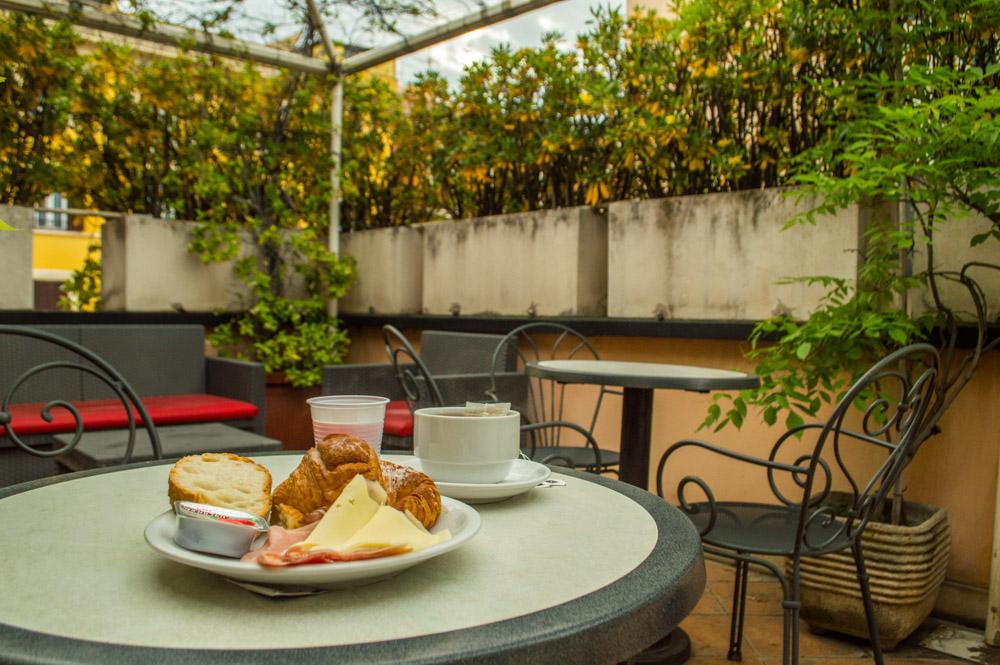
I gazed out from a terrace overlooking the skyline of Rome, iron tables and chairs arranged beneath trellises of plants. Breakfast on a Roman rooftop has to have been the most romantic thing I experienced on EuroTour. The terrace overlooked a rolling landscape of diverse buildings; in height, repair, color and style, they they all differed—like a forest of autumn trees.
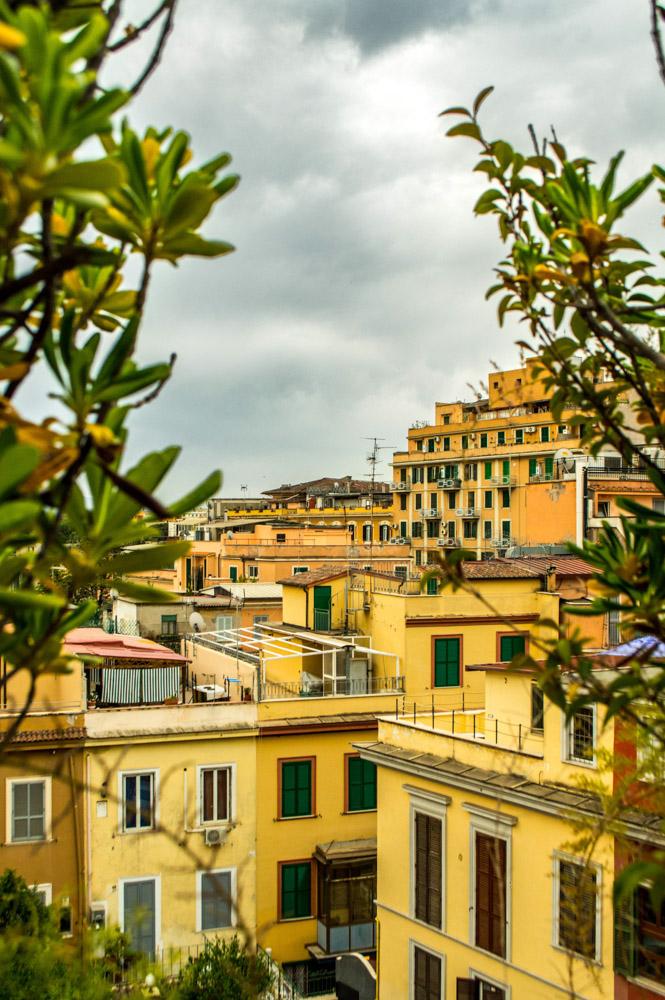
I could have sat there for the entire morning, but Rome awaited and we had a long walk to the ancient sites—or so I thought.
Walking out of the hotel for the first time since the sun had risen, I caught my breath. In both directions the street curved around ancient, towering structures. The rust-colored, brick dome nearest to us was under repair and its original purpose rather unidentifiable. However, no mystery surrounded the relic to my right. Ruins of Roman aqueducts and a medieval city gate dominated the small Park they passed through. There were people casually waiting for their tram beneath the arches of the aqueduct, as if standing under one of the world’s largest empire’s greatest wonders was an everyday occurrence!
I wish I could have inspected these iconic sites more closely, but we began our tour by heading the opposite direction. We strolled at length on one long, straight road. The chaos of Italian driving and the growing masses of tourist caused me to zone out the chaos and try to enjoy the calmer sensations the city offered. The earthen tones of the buildings added another layer of contrast to the cities I had visited on EuroTour. Paris was grey and sterile, Barcelona an explosion of color, yet Rome exemplified its reputation of “antiquity”. Its buildings came in faded rainbows of warm and sporadic cool tones, all covered in the dark smudges of pollution and time.
I was torn from my daydreaming by a site which creeped over the horizon. Out of nowhere, the ruinous rim of the Colosseum grew ever closer, more of its dramatic face reveal with every step. Even more than the Eiffel Tower had, the Colosseum excited me. It is an equally iconic structure, but one so much more historic. The king of all amphitheaters and inspiration behind the arenas we know today left me in awe of nearly every aspect of Roman culture. Their organization, innovation and resourcefulness gave rise to an Empire. (Yet, their social and justice practices leave something to be desired.)
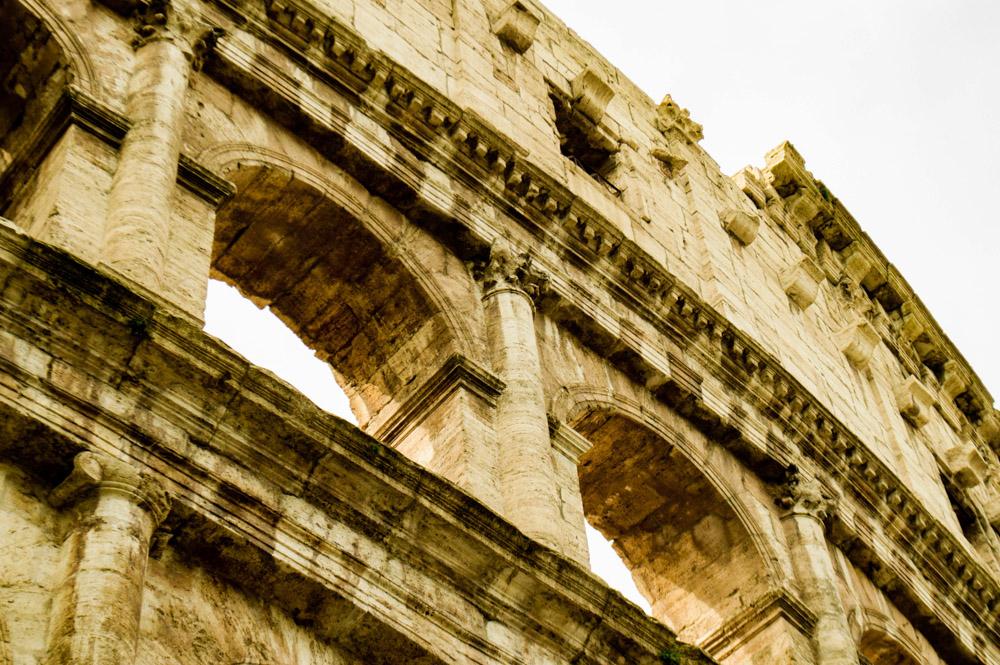
We tend to think of the Colosseum as home to bloody gladiator matches, and that it certainly was, but so much more graced its stage. Plays, races, sports events, comedy shows and even naval battles took place there! The latter was purportedly accomplished by filling the floor of the arena with water via aqueduct and launching miniature, but manned, ships to battle it out on the small pool.

Attendance was free, paid for by city taxes, though seating was segregated by class. The wealthiest and most influential sat close to the action, while male citizens sat in a section above. At the top of the bowl-shaped seating, women, servants and slaves were required to stand if they wished to enjoy the performances. Regardless of class, certain amenities were accessible by all. Vendors sold fresh food, while fountains provided fresh drinking water for everyone. In addition, a retractable canvas awning could be extended from the Colosseum’s rim to provide shade for the audience.
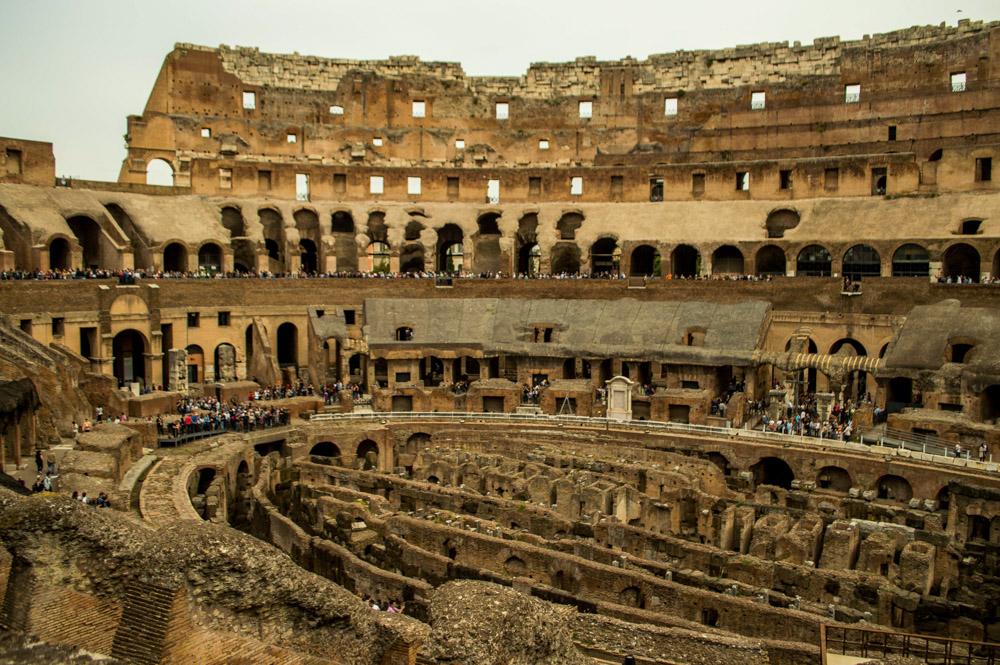
Romans solved the issue of how funnel thousands of people in and out of the Colosseum by labeling all the gates and seats with numbers and passing out assignments to attendees before they entered. The inscriptions are still able to be seen to this day over every gate but one. That entrance was reserved for the emperor and his entourage.
From the Colosseum, we made a quick jaunt over to the Roman Forum—center for political and religious power in the ancient city. I wish I could have spent more time in the ruined complex, because so much light can be shed on the history of the city by examining the details of half-buried buildings and scattered rubble. However, we were only able to briefly pass through the area, on a tight schedule to see the rest of the city. I managed to pick up a few of the important stories, however.
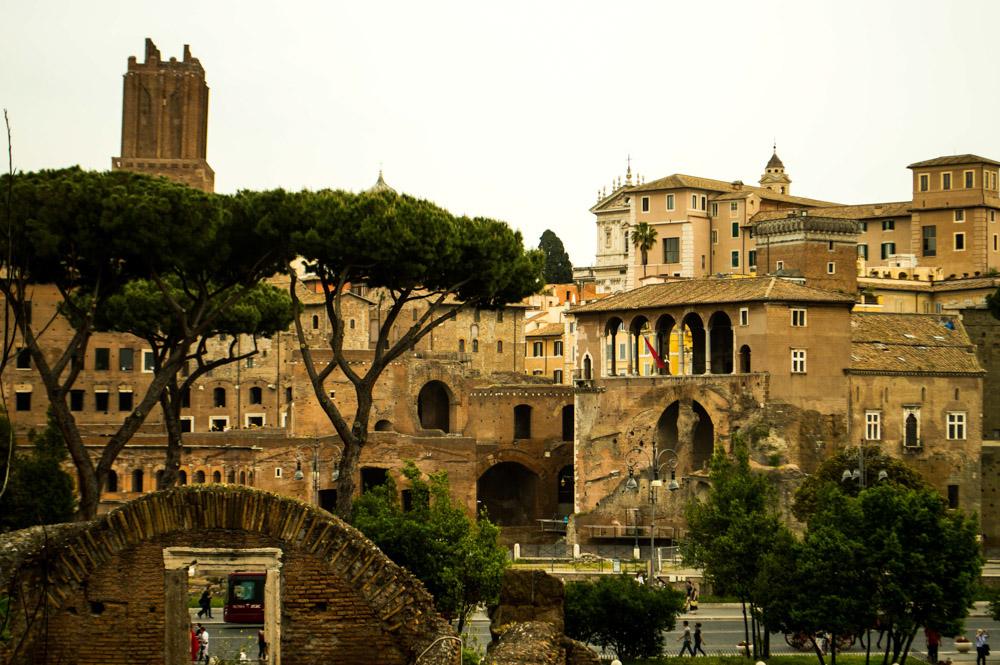
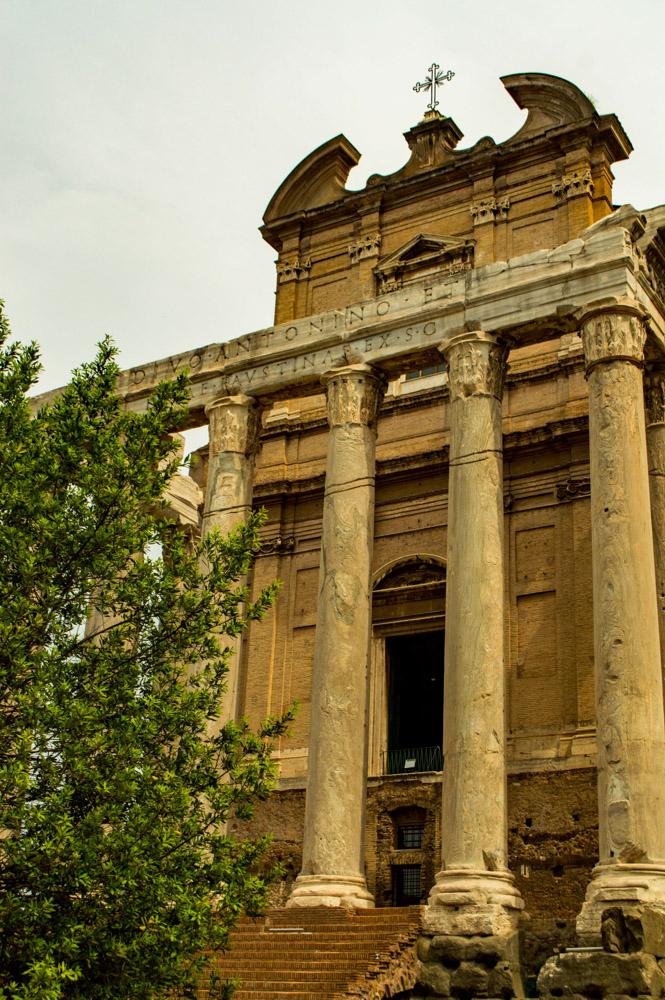
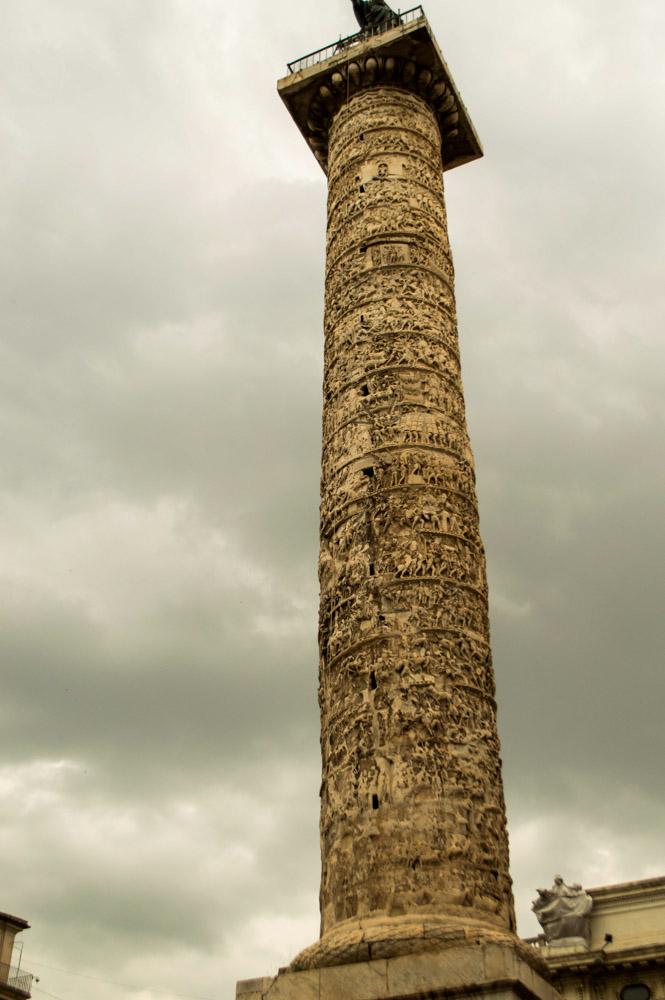
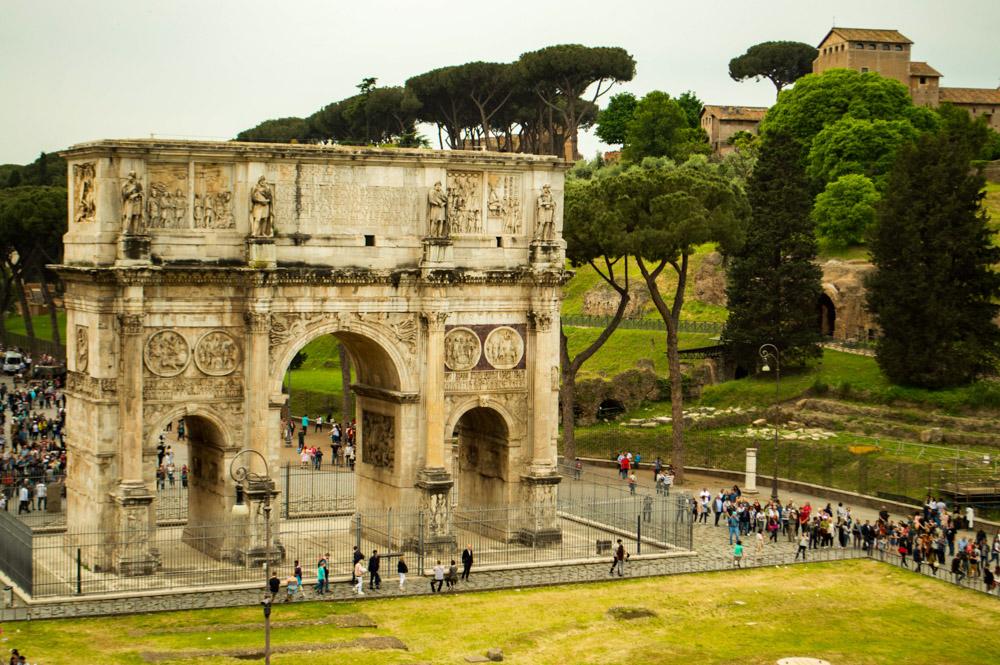
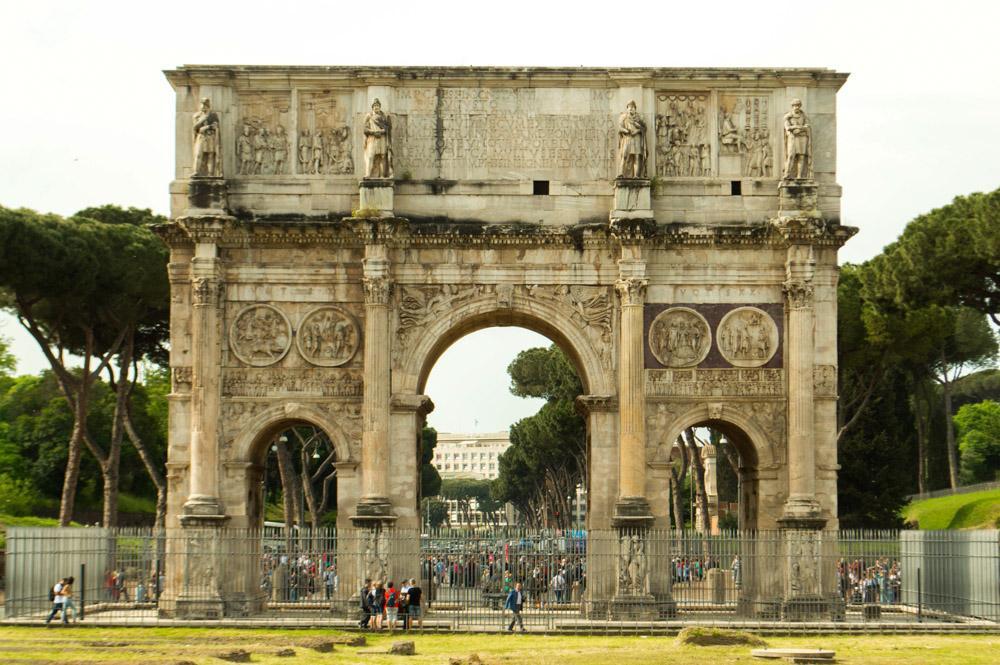
In the Forum stood the Temple of Vesta, home to her priestesses, the Vestal or Vesta Virgins. Vesta was the Roman goddess of hearth, home and family. The priestesses which served her were recruited at age ten and made vows to remain chaste for the duration of their priestly duties—30 years total. The first ten years were spent learning all the duties of a priestess. The second ten were spent performing those duties and the third teaching the newest generation. After service was complete the Vestals were granted a pension and allowed to marry. They were especially sought-after brides, often wedding noblemen due to their high status and reputation for bringing luck.
A particularly striking building (above) sits along one side of the form. The structure served as a temple before Rome’s fall, but neglect eventually saw it ruined and overtime soil accumulated, burying most of the original building. During the Middle Ages, scavengers attempted to pull the marble columns down, cutting deeply into the stone, but they failed and left them standing in what was at that time a grassy meadow. Later, Renaissance architects integrated the partially buried columns into the facade of a church, leading to the oddly elevated doorway we see post-excavation.
Surreal is the only word to describe how it feels to stand among and within spaces that are over 2000 years old. It is testament to Roman engineering that so many of their roads and structures still stand to this day. I wonder, would our modern world last so long were we to let it fall into ruin? Is that even important, given our society currently has a future, while the Romans do not?
Signed,
Andrew